This blog defines agroforestry and the five recognized agroforestry practices. A survey of 300 landowners across New York State revealed that forest farming, alley cropping, and windbreaks are the most common practices implemented.
Agroforestry is the intentional combination of agriculture and forestry practices to create integrated, productive, and sustainable land-use systems. The five recognized practices of agroforestry include Alley Cropping, Forest Farming, Silvopasture, Riparian Buffers, and Windbreaks. These practices are based in the culture of indigenous people who stewarded the lands before us. Our ability to continue these practices, both in the modern day and for future generations to come, speaks to the respect they had for the natural environment.
Alley cropping is growing an annual/perennial crop simultaneously in the alley ways between rows of a long-term tree crop. The agricultural crop generates annual income while the long-term tree crop matures.
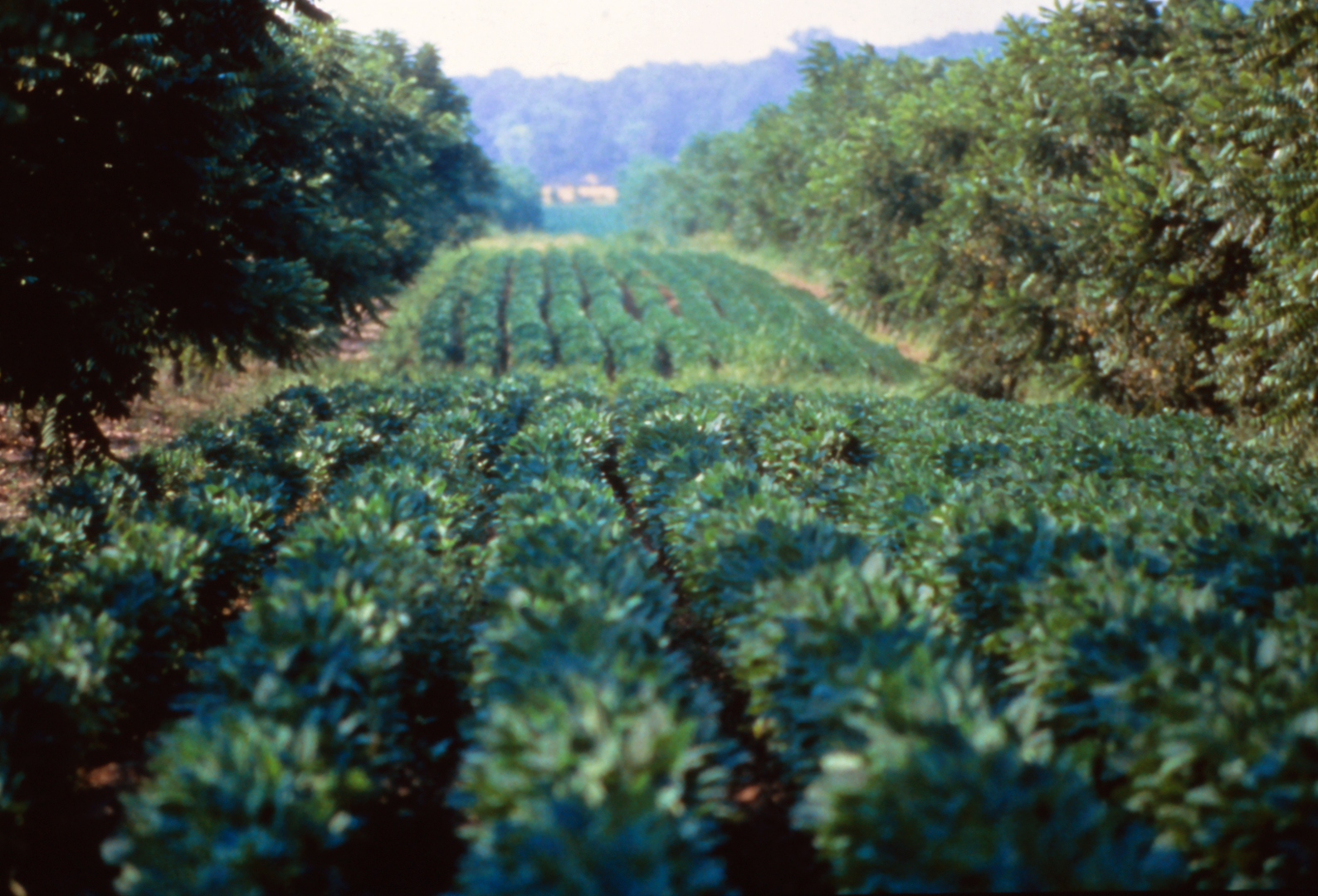
Alley cropping soybeans and Walnut trees. Missouri, USA. Attribution: National Agroforestry Center, CC BY 2.0 <https://creativecommons.org/licenses/by/2.0>, via Wikimedia Commons
Forest farming is the intentional manipulation, integration, and intensive management of woodlands under a managed forest canopy to produce non-timber products (e.g., shiitake mushrooms, maple syrup, and ginseng).
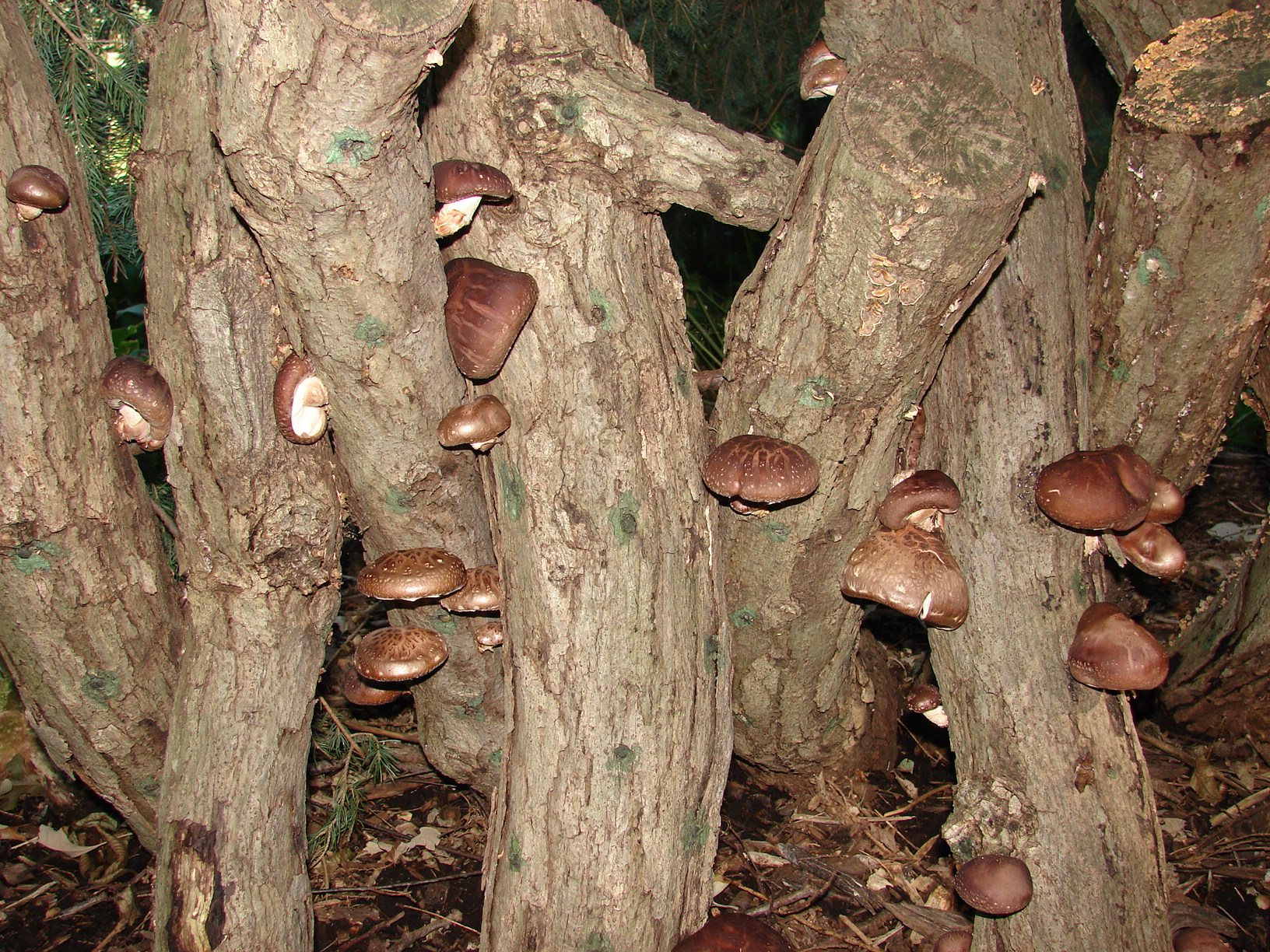
Shiitake growing on logs in a garden. Attribution: dominik18s from Crystal Lake, US, CC BY 2.0 <https://creativecommons.org/licenses/by/2.0>, via Wikimedia Commons
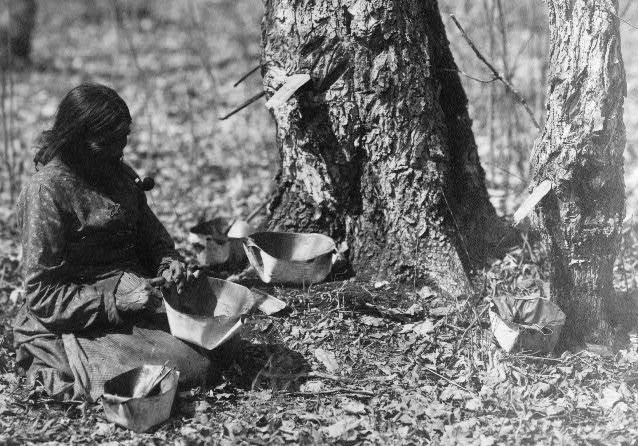
A 1908 Roland Reed photo of an Ojibwe woman tapping for maple syrup. Reed, Roland, Public domain, via Wikimedia Commons.
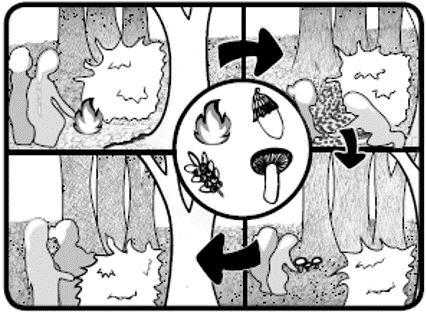
Traditional system of Northern California tribes who used fire, pruning, and other management practices to produce acorns, huckleberries, mushrooms, and more for both people and wildlife; Credit: illustration by Colleen Rossier
Silvopasture combines timber, livestock, and forage production on the same acreage. Trees provide long-term returns, while livestock generate an annual income.

Cattle grazing in a silvopasture. Attribution: USDA NRCS Texas, Public domain, via Wikimedia Commons
Riparian buffers are natural or planted woodlands adjected to water bodies. They are designed with trees, shrubs, and grasses to protect water resources from non-point source pollution.
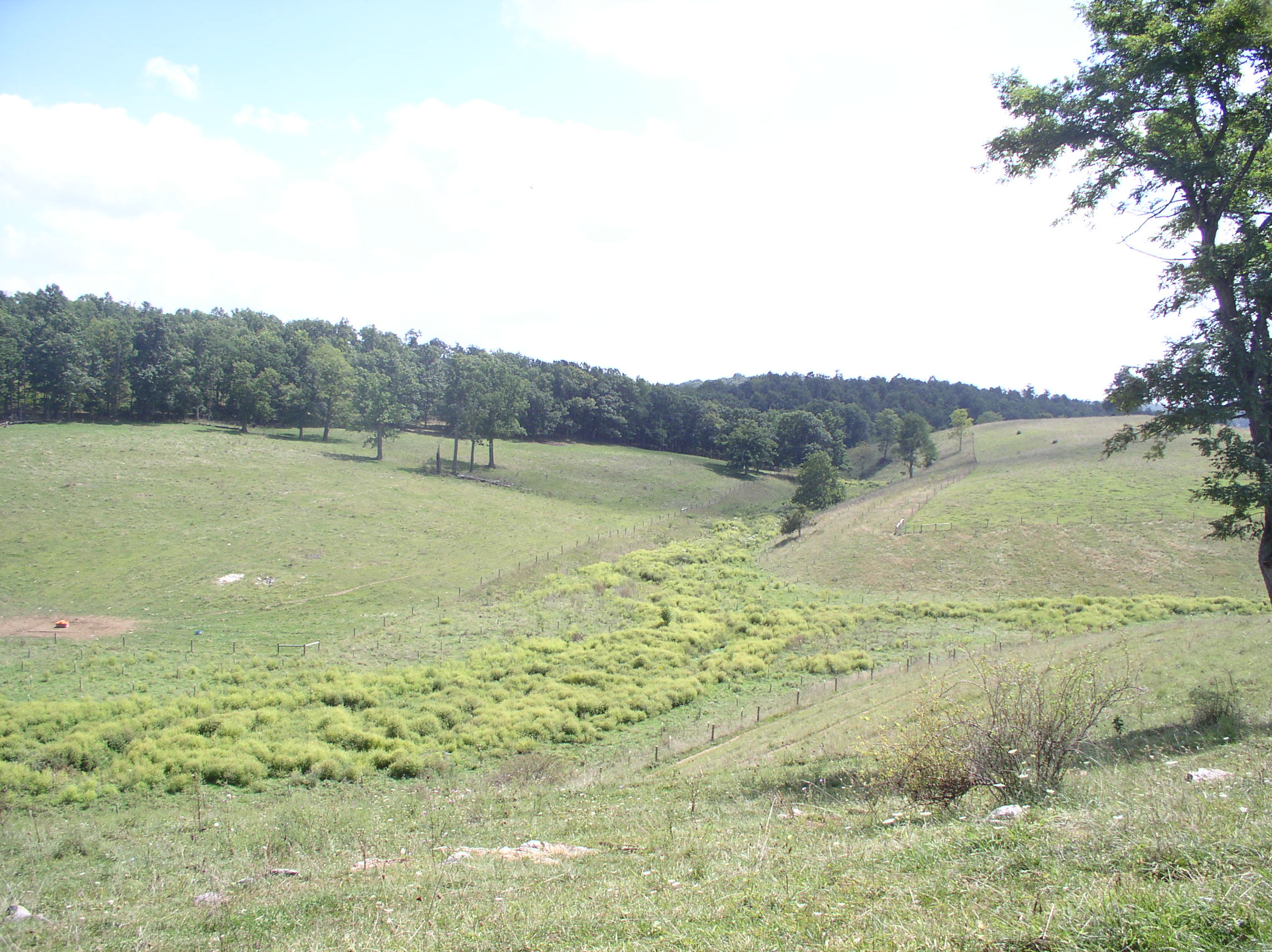
Vegetation inside fenced riparian buffer improves water quality. Augusta County, Virginia, USA. The watering trough (to the left of the buffer) outside the buffer area provides an alternate water source for cattle. Attribution: USDA, Public domain, via Wikimedia Commons
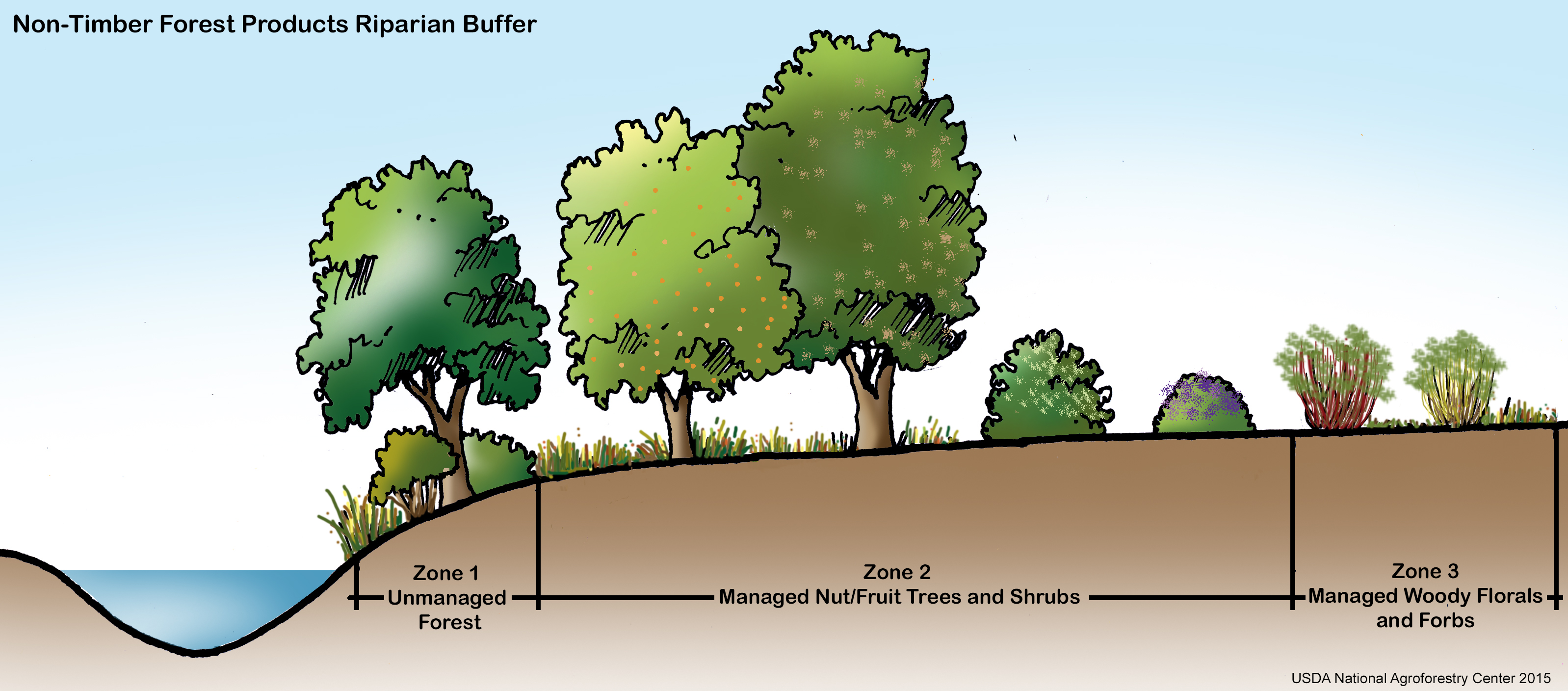
Although riparian forest buffers are often designed primarily for water quality benefits, these practices can also include woody species that provide products such as nuts, fruit, and decorative woody florals. National Agroforestry Center, CC BY 2.0 <https://creativecommons.org/licenses/by/2.0>, via Wikimedia Commons
Windbreaks are plantings of single/multiple rows of trees or shrubs that redirect or modify the wind.
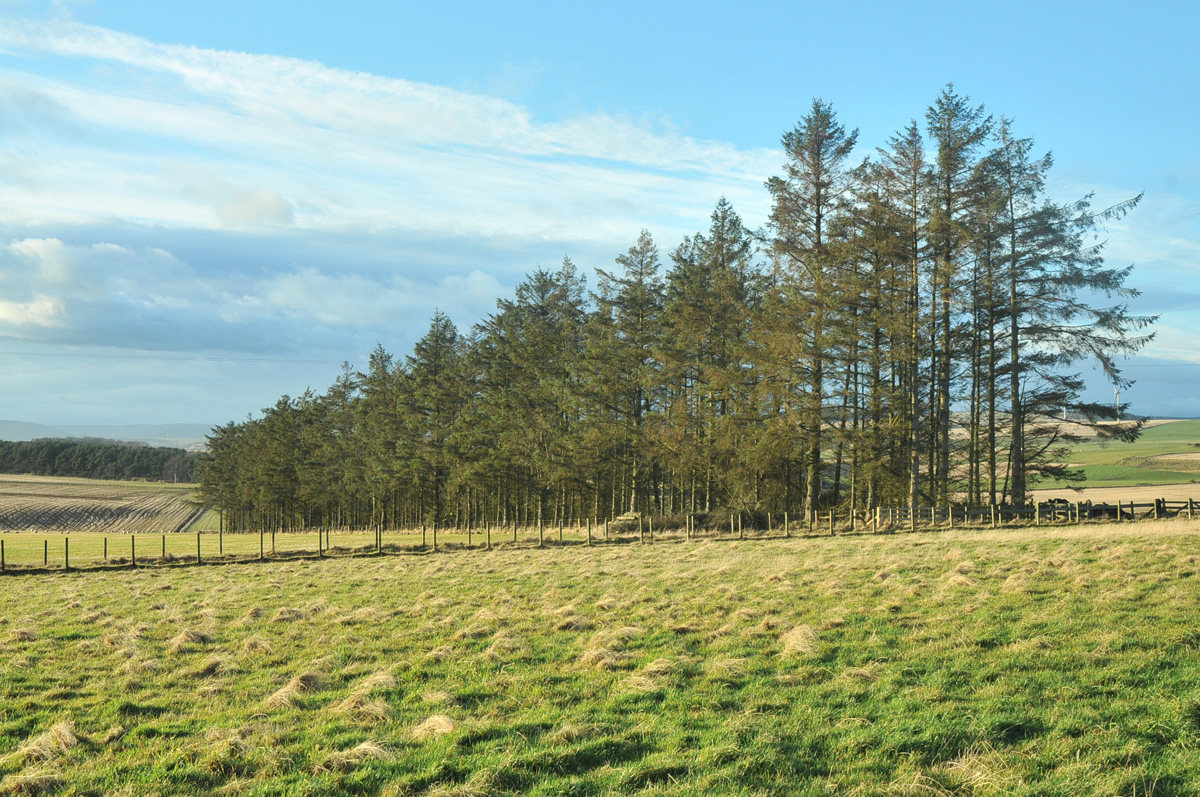
Windbreak near Crossgates Farm by Steven Brown. Attribution: CC BY-SA 2.0 <https://creativecommons.org/licenses/by-sa/2.0>, via Wikimedia Commons
In recent years, agroforestry practices have become more widely implemented on a global stage as farmers and landowners have begun to realize the myriad opportunities to generate value. To support this movement, several centers have emerged across the country to both advance and disseminate their research for use by the general public. These centers include the US Department of Agriculture’s National Agroforestry Center (USDA) in Lincoln, NE; the Center for Agroforestry at the University of Missouri (UMCA) in Columbia, MO; and the Agroforestry Resource Center at the Cornell Cooperative Extension of Columbia and Greene Counties (CCE-CG) in Acra, NY.
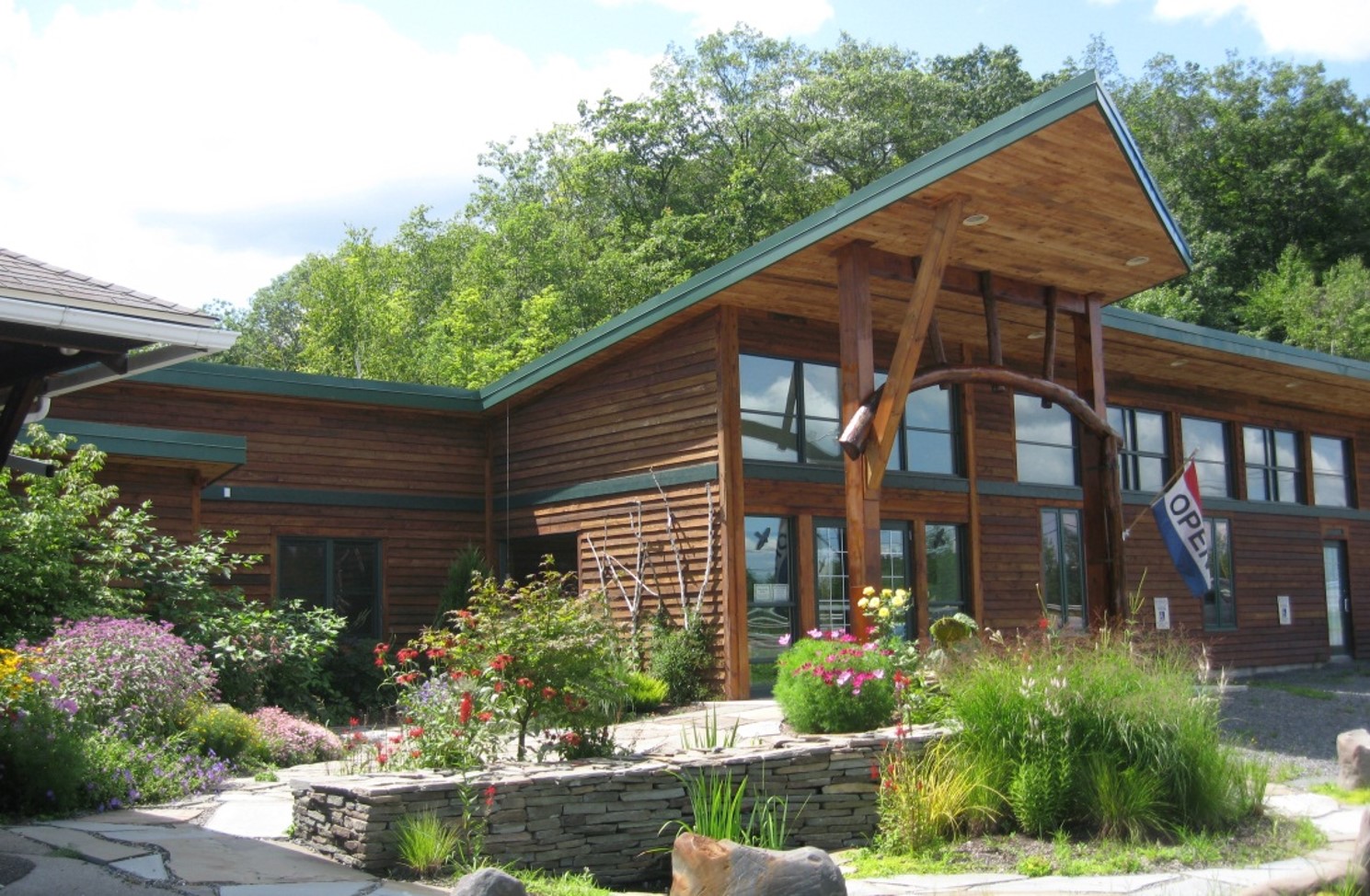
Agroforestry Resource Center at Cornell Cooperative Extension of Columbia and Greene Counties, Acra, NY.
Here in New York State, there is similarly a big push around ecological stewardship. To meet this growing need, CCE-CG conducted a survey in 2022 to assess the landscape of agroforestry practices currently being used. Based on this survey of over 300 landowners from across New York, the most common practices include forest farming, alley cropping, and windbreaks. Moreover, while there is motivation to scale up current operations and incorporate additional practices, landowners have identified a lack of support around education and technical assistance as the main barriers to entry.
To bridge this gap, here at the Agroforestry Resource Center CCE-CG we have created programming to support our farmers including educational workshops and demonstration sites. Thanks to the Edward Mother’s Earth Foundation, we are able to execute these projects onsite in our 142-acre Siuslaw Model Forest where we have a fully operational Shiitake Mushroom laying yard and American Ginseng plantings.
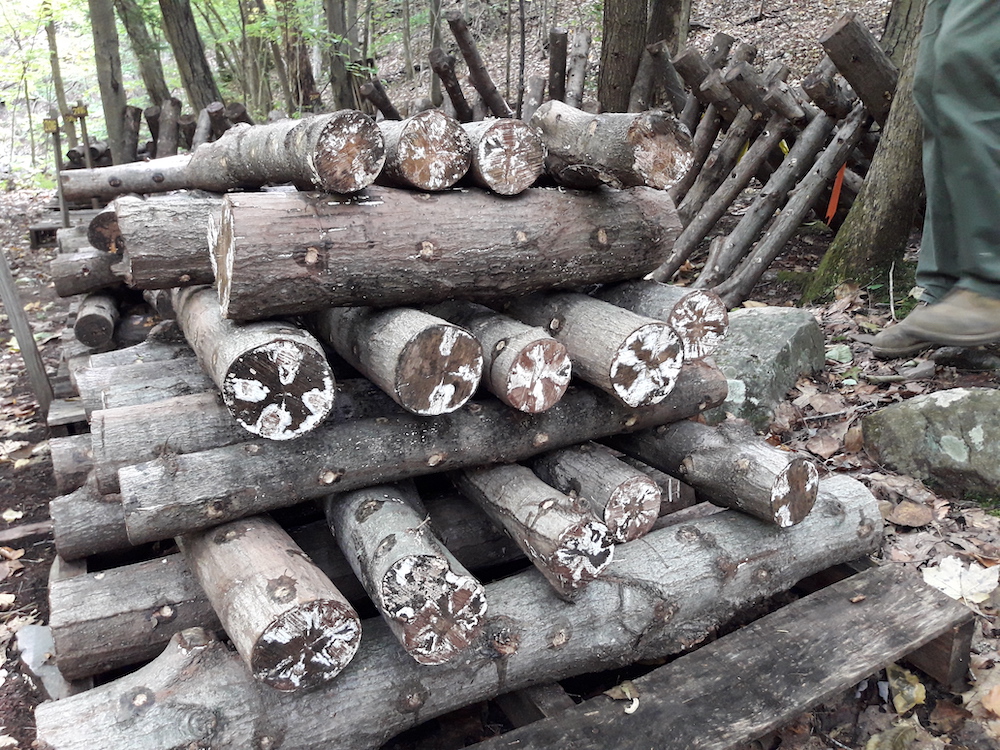
Shiitake laying yard demonstration at Siuslaw Model Forest.





